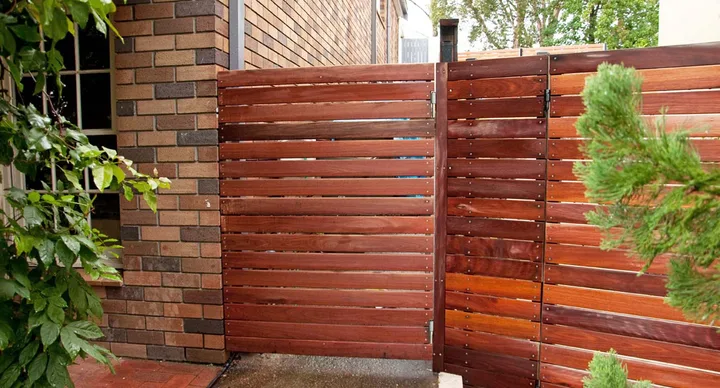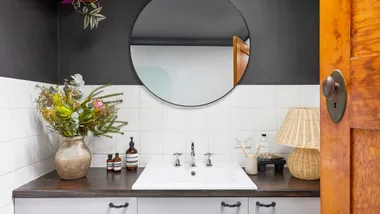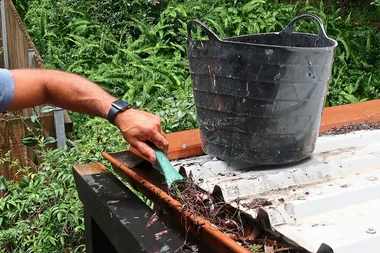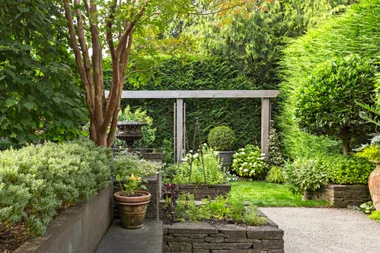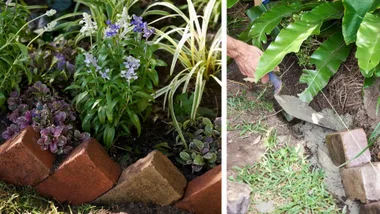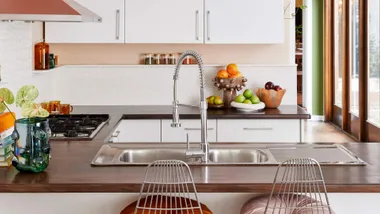Side passages are not just an eyesore – littered as they often are with bins, tarps and hoses – they’re also a safety issue. But a galvanised-steel gate frame with hardwood cladding could be your saviour.
Give your fence a facelift with this easy-to-assemble how-to that looks good, too.
Gather your supplies
Gatepost (if needed); assorted plastic packers; Fortress Gates 1400mm E-frames (1 hinge side, 1 latch side) and 1000mm horizontal H-rails for 1m-wide gate (3); 8mm hex socket; 5.5mm drill bit; self-drilling timber to metal screws; 90 x 45 x 1500mm wall post; concrete screws; cladding (here, Forest Reds 86 x 19mm decking); cold galvanising spray paint; pigmented decking oil; latch, to suit
Here’s how
Step 1
Use an existing fence post as gatepost, but ensure it’s well concreted in and plumb. If post is out of character with neighbouring fence, clad it first so it blends in. This also allows you to use packers behind cladding to compensate if post is out of plumb. Use E-frame of gate to mark in hinge positions, and make sure there’s a packer behind each hinge position. Hinges are reversible for different configurations. Alter hinges, as necessary.
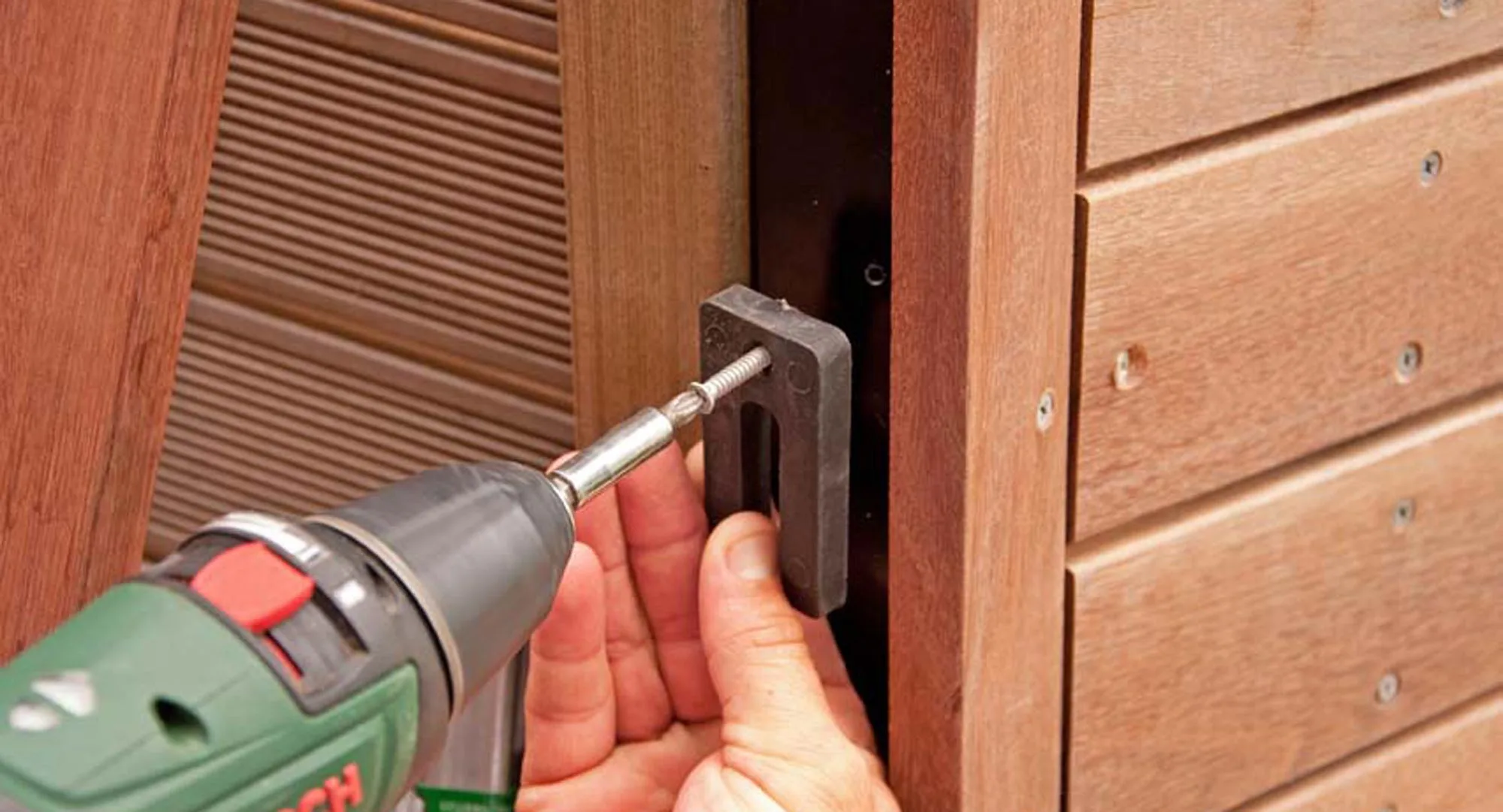
Step 2
Screw on cladding with corner flush. Check hinge surface of post is plumb.
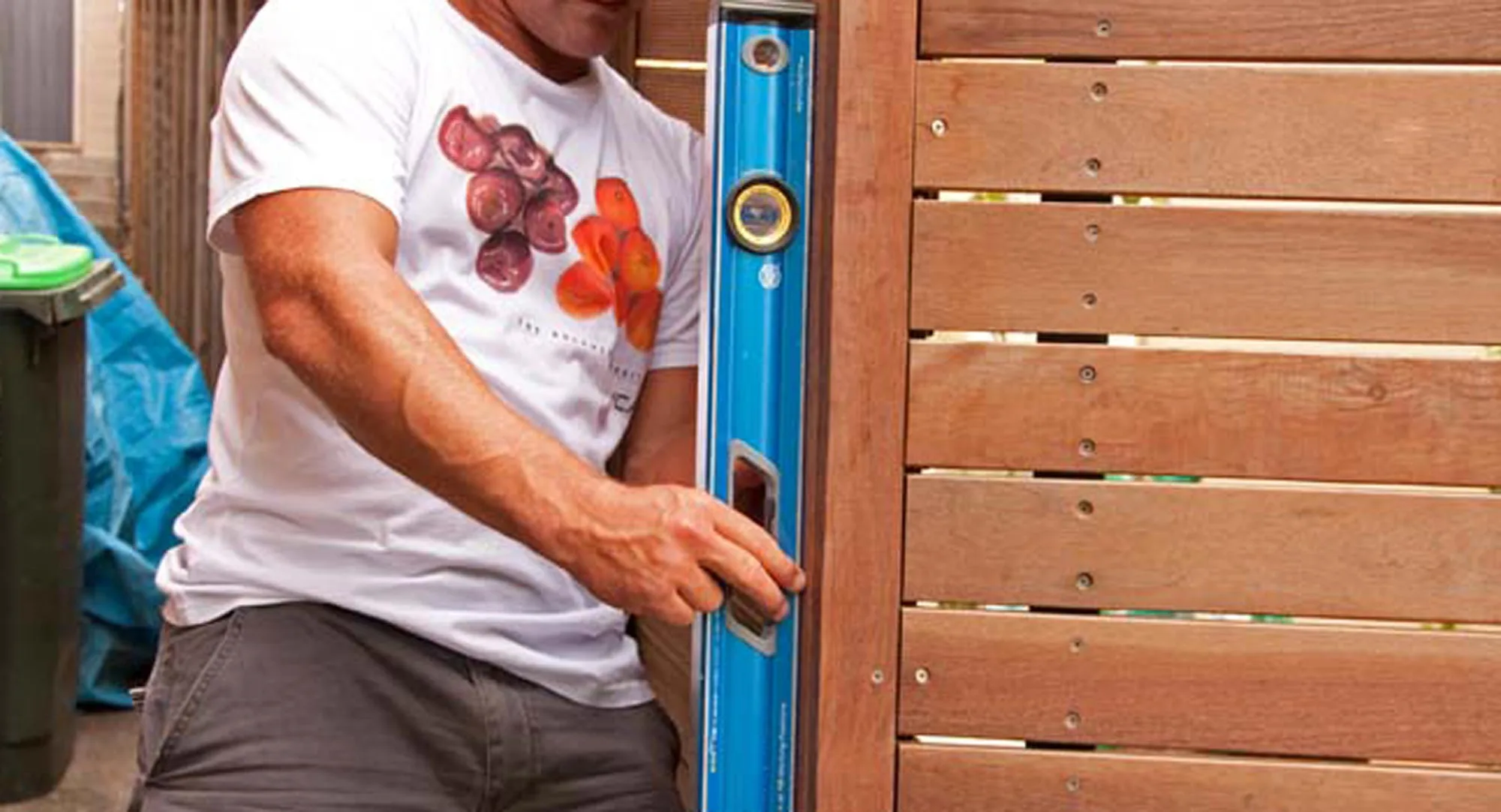
Step 3
Hold hinge E-frame against post so bottom of frame is 130-140mm above path. Mark bottom of hinges on post or post cladding. Measure total width of opening at top and bottom of gate, and use smaller dimension (here, 1130mm). Allow a clearance on closing side and hinge offset, then subtract from opening width for overall gate frame width (here 1095mm). Subtract from this the return on the E-frame (100mm each side) to give total length of H-rails (here 895mm). Cut to length. Spray cut ends with cold galvanising paint to protect against rust.
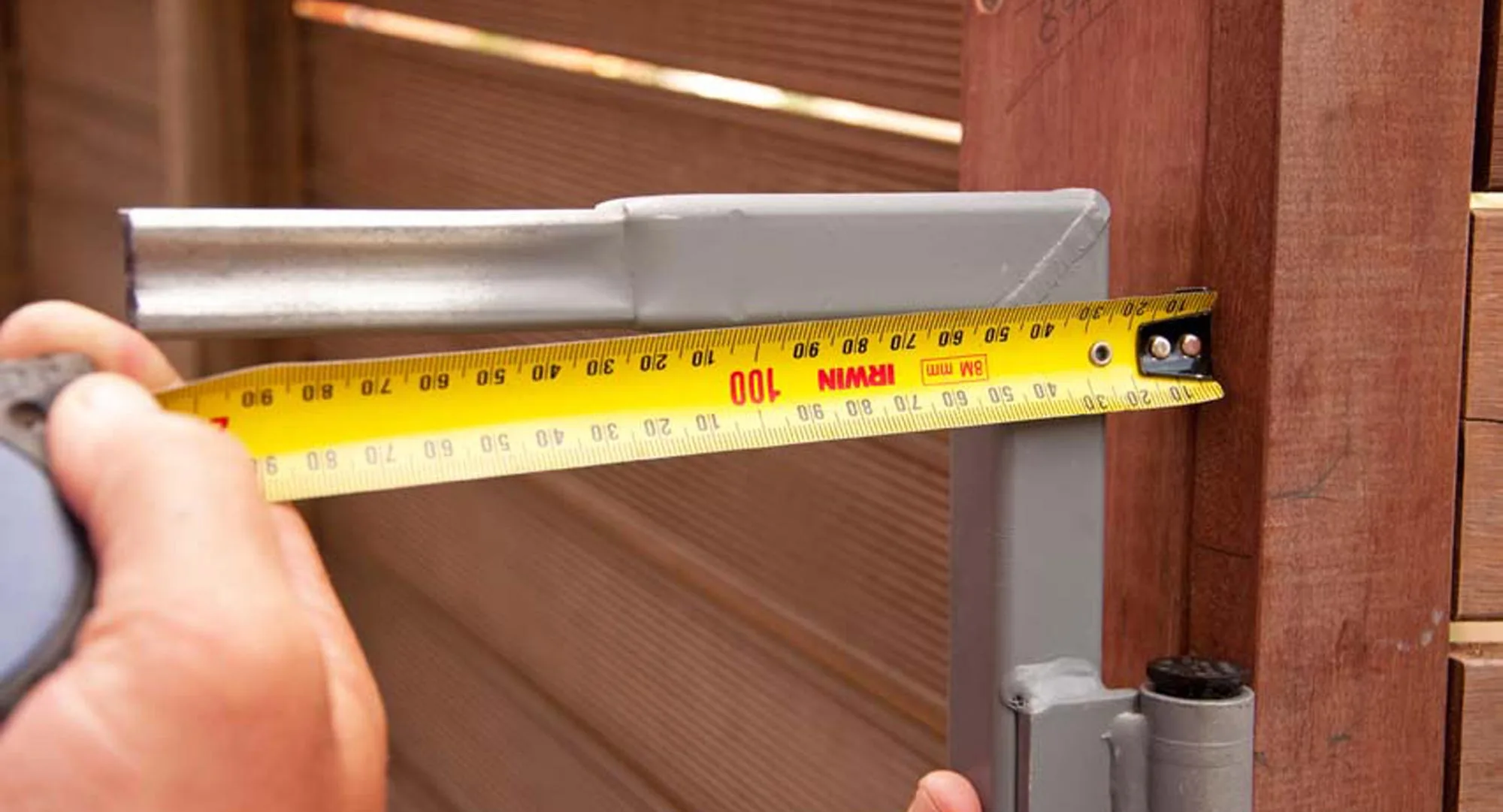
Step 4
Feed H-rails onto bars of E-frames. Tap tightly together with timber block and hammer. Check width at each H-rail.
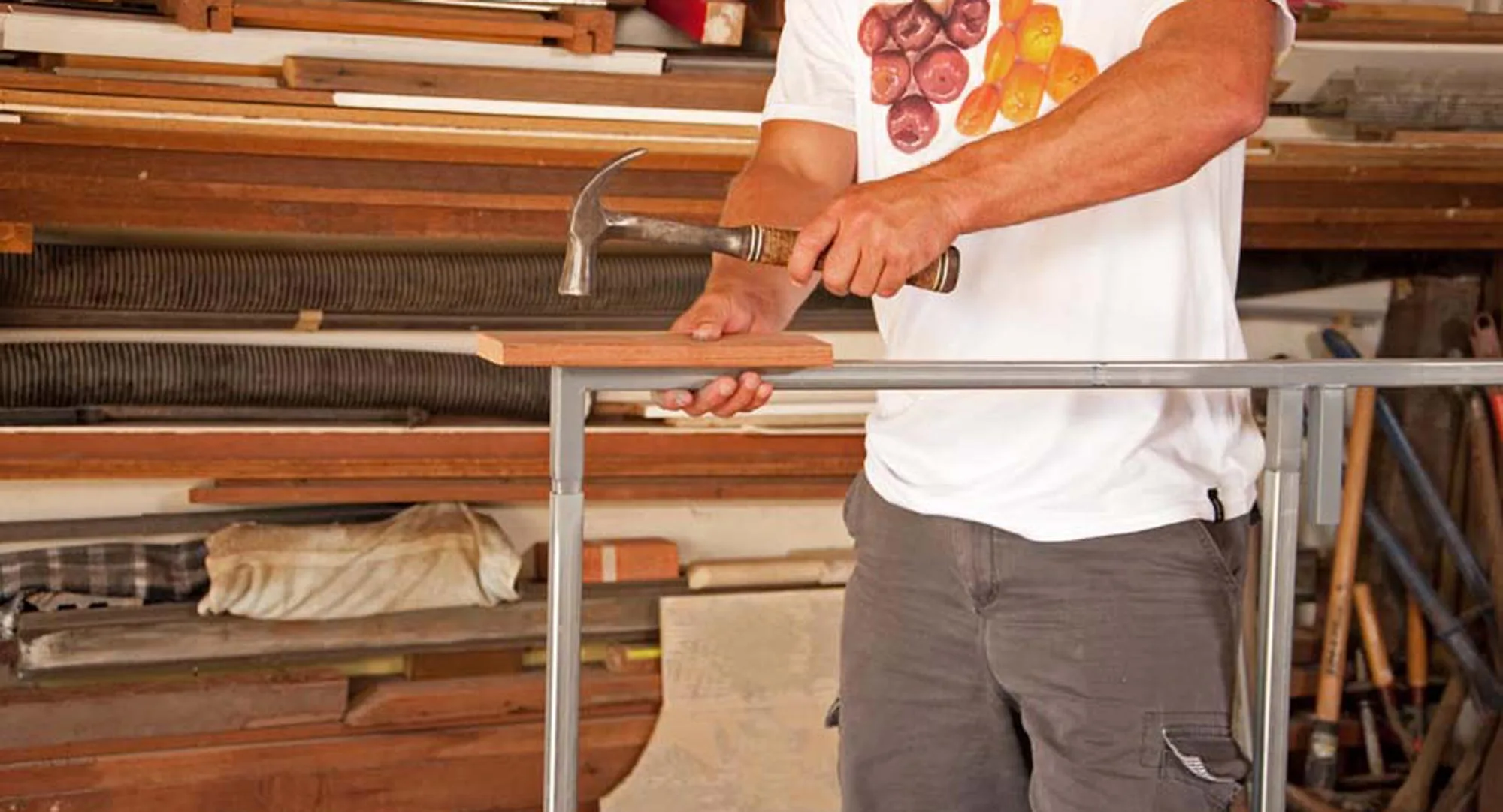
Step 5
Screw hinge pin plates to post where marked, using only 1 screw for each hinge at this point, predrilling pilot holes first to stop hardwood splitting. Be sure to align them accurately. Hang gate frame on hinge pins, checking it swings correctly and has sufficient clearance at bottom for its entire travel. Drive in remaining screws to secure hinge to post.
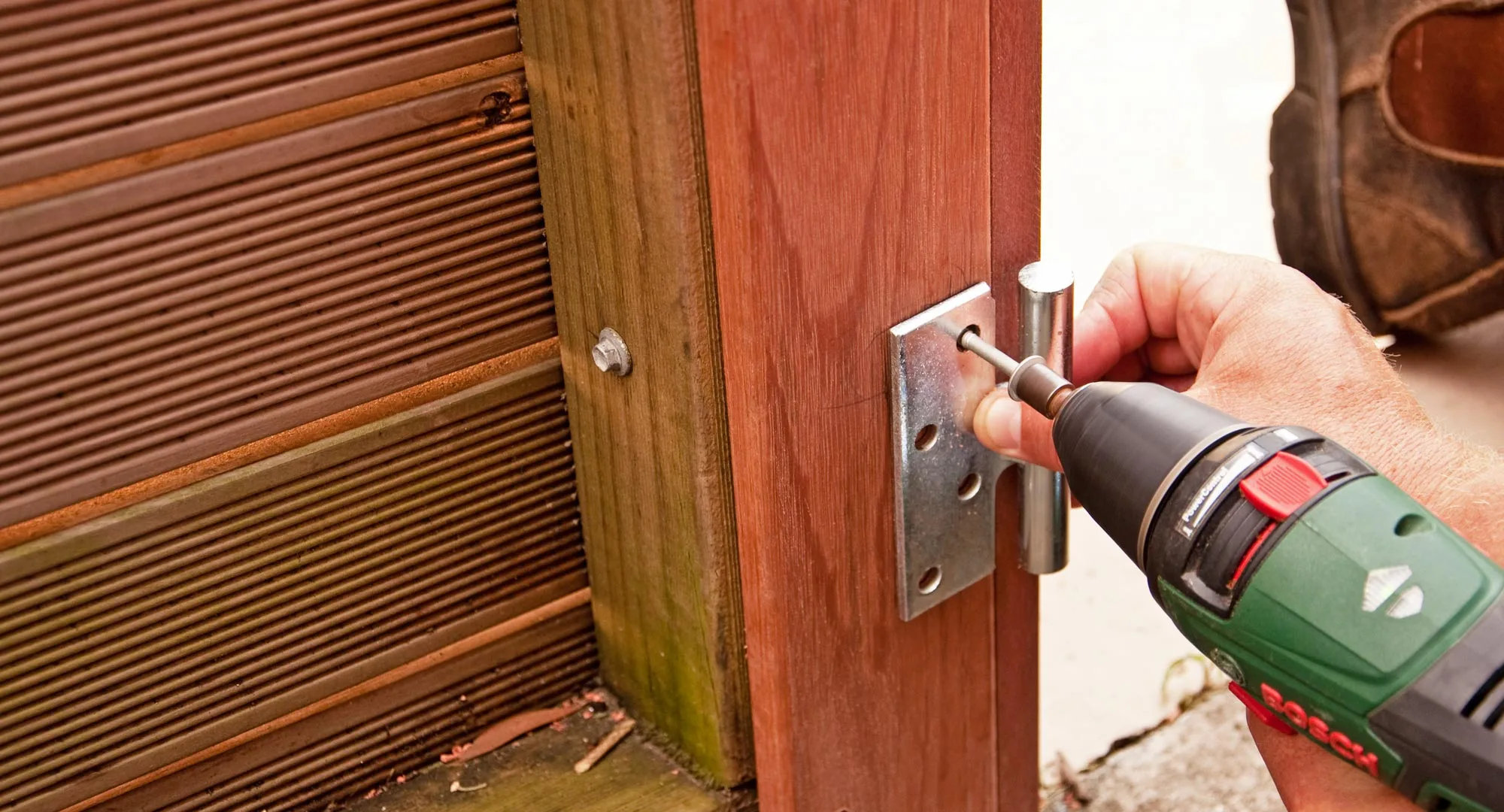
Step 6
Screw H-rails to E-frames using hex-head screws provided.
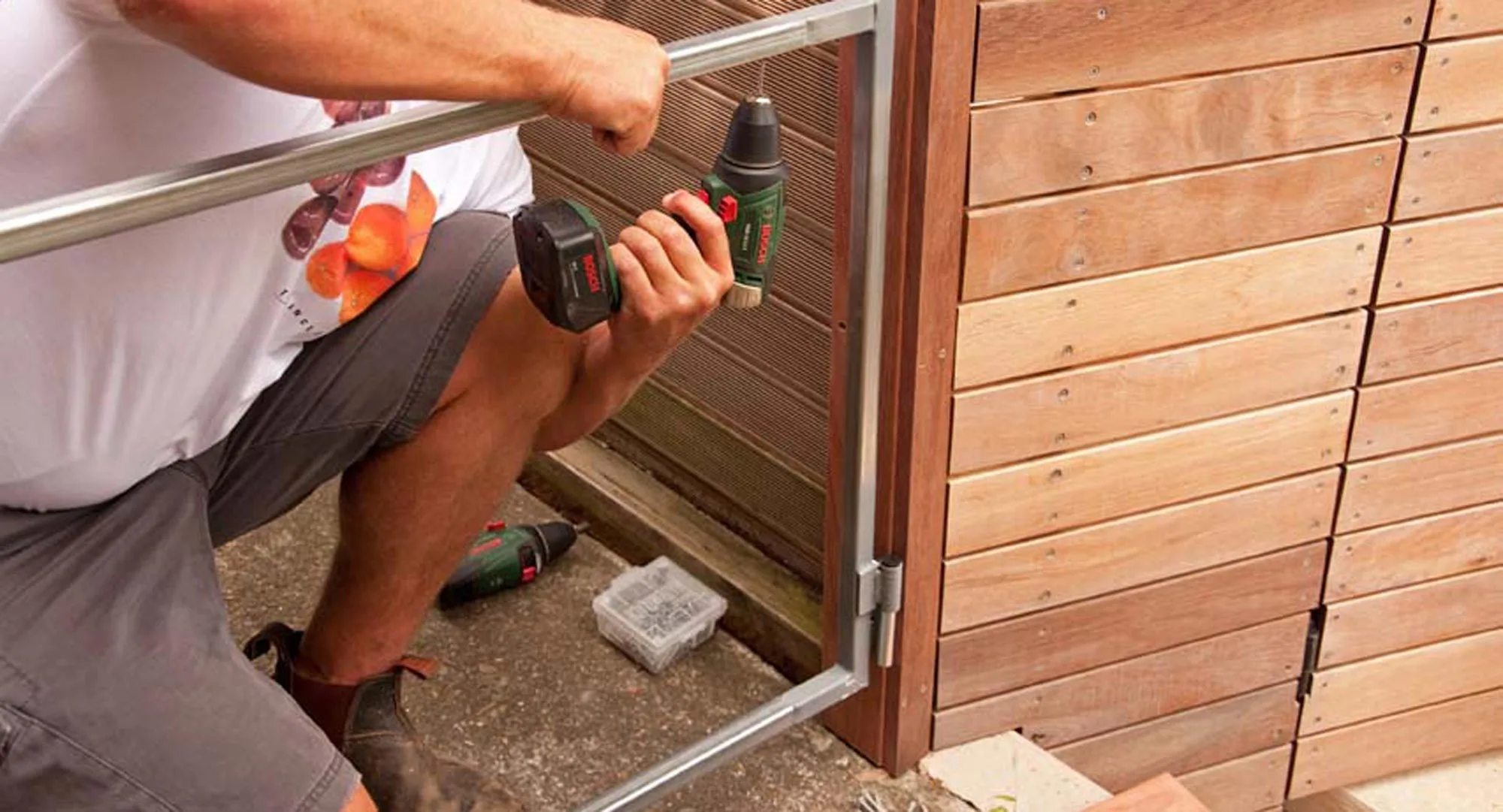
Step 7
Cut cladding to length, predrill and countersink for screws. Clamp bottom piece to frame so it will be centred in opening, leaving a 70mm clearance underneath. Check it is level, then screw on with self-drilling timber to metal screws.

Step 8
Continue working up gate, using packers to keep gaps even. Align slats with neighbouring fence and gate for a uniform look. On closing side, add wall post for gate to close against. Fix to wall with concrete screws. Coat gate and posts with decking oil to match neighbouring fence, if desired. When dry, add latch.
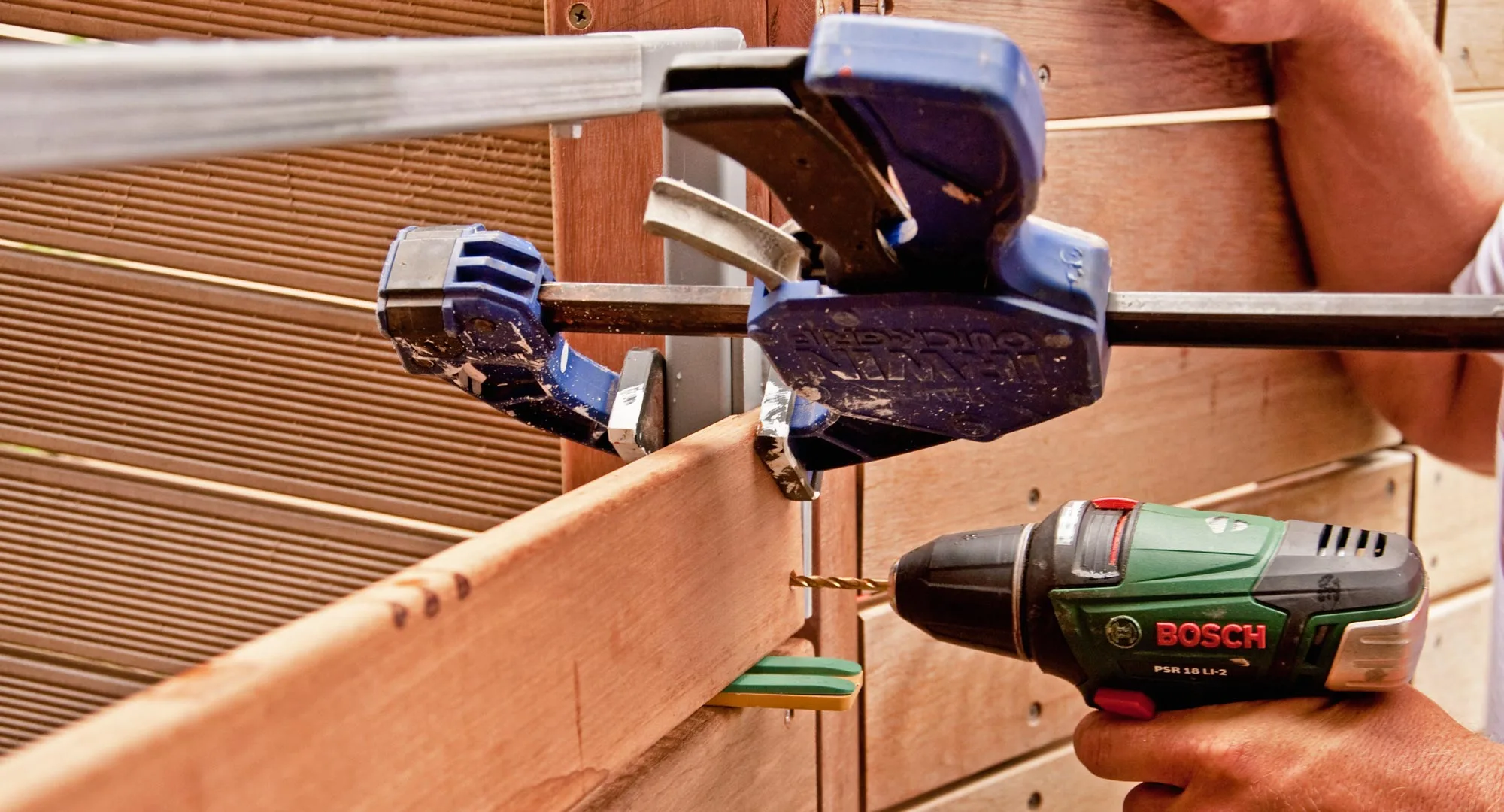
You may also like
How to make a rustic garden gate
Install a pool fence that doesn’t compromise the look of your backyard
Two easy projects to get your front garden looking schmick
